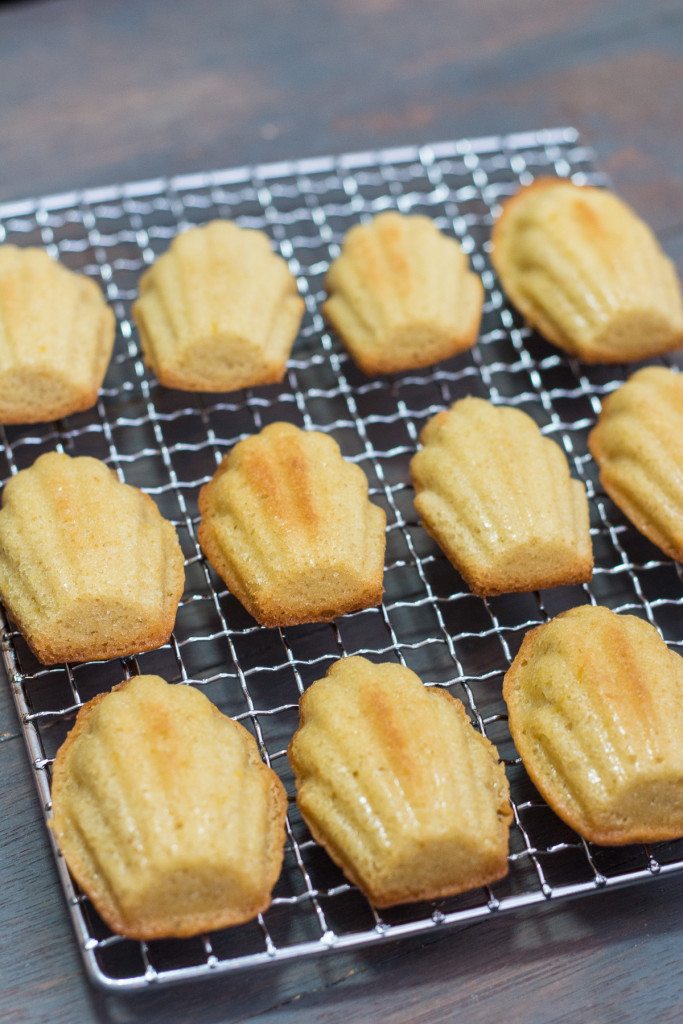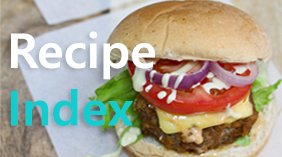Remember this drink? ↓
I have been getting comments on Pinterest, on my blog, Facebook and email as to where I purchased the cute, pretty bottles that I used for my Cucumber Lemonade. My cousin was resourceful enough to actually bring a batch of this over, so if you are interested, you can find them here.
So, I made madeleines last week. Madeleine is considered to have been named after Madeleine Paulmier. People who bear names of food, aren’t they lucky? I don’t mind being called crème brulee or tiramisu. For real. Or maybe even strawberry shortcake. Okay, this one, I am kidding. I do not have freckles and I might not be able to carry off that puffy pink hat!

There are so many foods that are inspired by the names of their creators and some especially have the dishes named after them. Examples would be
- Peach Melba – This classic dessert was invented in honor of Nellie Melba, while she was a guest during her performances.
- Margherita pizza – It is believed that when Queen Margherita visited Naples, one of the famous pizza maker in the area, Raffaele Esposito, created a pizza especially for her.
- Pavlova – The meringue-based dessert is made after the famed Russian ballet dancer Anna Pavlova.
- Victoria Sponge – Queen Victoria’s favorite cake it seems!
- Graham cracker – It was invented by a minister named Sylvester Graham.
- Fettuccine Alfredo – Chef Alfredo de Lelio invented this dish for his wife in the early 20th century. Couldn’t he have just named it a pregnant woman pasta instead of trying to be all fancy? #rolleyesmoment
- Tarte Tatin – Named after the sisters, Stephine Tatin and Caroline Tatin. Apparently they accidently made the tart upside down. WOW.
If I make a boo boo in my baking, I’m labeled as careless, but when the Tatin sisters do it, they end up being famous? Life is never unfair. *Inserts sad emoji*
I need to dunk my face into a plate of these Madeleines.
Although they look just like little cakes, it is easy to recognize them from their scalloped shell shaped and a hump on one of the sides. I have always found madeleines to be classy because they are so commonly served during high-teas. These Madeleines are slightly crisp on the outside, yet soft and spicy on the inside. They are actually really simple to make and the ingredients use pretty much the stuff you have in your pantry. This one is a classic madeleine recipe however you can make certain modifications to the recipe and create a WHOLE lot of flavors!
- Chocolate Madeleines – Decrease the flour by 1 tablespoon and add 2 tablespoons unsweetened cocoa powder to flour mixture.
- Lemon Madeleines– Add 2 tablespoons of lemon juice and 1 tbsp of finely grated lemon juice to the batter before adding the flour mixture.
- Orange-Chocolate Madeleines – Add 1/4 teaspoon pure orange extract and 1 teaspoon finely grated orange zest with the vanilla extract. Decrease the flour by 1 tablespoon and add 2 tablespoons sifted Dutch-processed cocoa powder to the flour mixture.
- Room temperature eggs beat better than cold eggs, so always make sure your eggs are not cold.
- Sift the dry ingredients.
- Fold the ingredients by using a spatula. Do not overwork the batter.
- Good quality butter makes the madeleines more delicious, so if you can splurge on a good butter, go ahead!
- Cold batter yields nicer humps.
- Grease the madeleines pan very well. Make sure you butter into every crevice of the scallop shells as this would prevent it from sticking and this would also give you a pretty golden crust.
This Classic Madeleine Recipe yields a light and tender crumb with a fragrant, buttery flavor. Madeleines are fairly easy to tackle. You do not need to be in France to be able to savour good madeleines and I am serious.
- 115g salted butter
- 130 g all-purpose flour
- ½ teaspoon baking powder
- 3 large eggs, at room temperature
- 100g castor sugar
- 30 g firmly packed light brown sugar
- 1 teaspoon pure vanilla extract
- In a small saucepan, melt the butter and then keep it warm.
- In a small bowl whisk together the flour, baking powder, and salt.
- Using an electric mixer, beat the eggs and sugars at high speed until the mixture is thick and pale in color.
- Add in the vanilla extract and mix well.
- Add in one-third of the flour mixture over the whipped eggs and gently fold in, using a rubber spatula.
- Fold in half of the remaining flour, and then fold in the rest.
- Do not overmix the batter as you do not want to deflate the eggs.
- Slowly drizzle the butter in and using a spatula, gently fold the butter mixture completely into the egg batter.
- Cover and refrigerate the batter for at least an hour or two. You can also store this overnight.
- Preheat your oven to 180 degrees C.
- Grease the molds of two madeleine pans with butter.
- Drop a generous tablespoonful of the batter into the center of each prepared mold, leaving the batter mounded in the center.
- Bake the Madeleines for about 10 - 13 minutes until the edges are golden brown and the centers spring back when lightly touched.
- Remove the pans from the oven and immediately tap each pan against the counter to release the Madeleines. Place Madeleines on a wire rack to cool.
- These madeleines can be stored in an airtight container at room temperature for a couple of days.








Could you convert the metric measurements to US? I would love to try this but am intimidated by the metrics.
Thanks!
Ingredients
4 ounces salted butter
4.5 ounces all-purpose flour
½ teaspoon baking powder
3 large eggs, at room temperature
3.5 ounces castor sugar
1 ounce firmly packed light brown sugar
1 teaspoon pure vanilla extract
Hope this helps 🙂
I have started seeing baking powder in a few recipes and I’m wondering why? I never heard of it before and not sure why they would add something that is not necessary. Try your recipe as us and omit the baking powder, the results are the same if not fluffier.